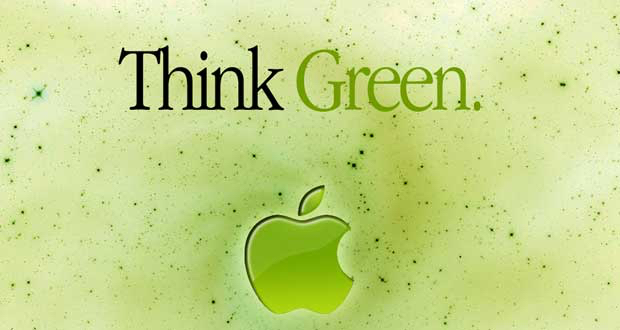Apple is among the Top 30 Tech & Telecom list as compiled by the U.S. Environmental Protection Agency (EPA). The list represents the largest green power users among technology and telecommunications partners within the Green Power Partnership. The combined green power use of these organizations amounts to nearly 10.6 billion kilowatt-hours annually, which is equivalent to the electricity use of nearly 968,000 average American homes annually.

In 2001, EPA launched the Green Power Partnership to increase the use of renewable electricity in the United States. The Green Power Partnership is a voluntary program that encourages organizations to use green power as a way to reduce the environmental impacts associated with conventional electricity use. In return for technical assistance and recognition, partners commit to use green power for all, or a portion, of their annual electricity consumption.
Green power is zero-emissions electricity that is generated from environmentally preferable renewable resources, such as wind, solar, geothermal, biogas, eligible biomass, and low-impact hydro. Using green power helps build demand for the development of new renewable energy capacity nationwide and helps users reduce their carbon footprints
Here’s Apple’s profile at the Green Power Partnership: “At Apple, we already achieved 100 percent renewable for all our U.S. operations (including all of our data centers)—and we did that back in 2013—and we are up to 93 percent for our worldwide operations.
“To achieve this we use a tiered approach—starting with energy efficiency, followed by an aggressive use of new Apple created renewable energy generation projects, and then through industry-leading partnerships with utilities and renewable energy providers for grid-purchased renewable energy.
“When investing in grid-purchased renewable energy, we prefer projects that clearly demonstrate the principle of ‘additionality,’ whereby Apple’s involvement causes new renewable energy sources to be developed and brought to the market.
“Our preference in grid-purchased renewable energy is to contract directly with renewable generation sources. However, we cannot purchase energy this way everywhere we operate—in some cases, regulations actually prohibit it. In such situations, we may use the local utility’s green energy program, if it is sufficiently robust, or purchase renewable energy credits (RECs). Prior to bringing online our Apple-created projects, we may purchase RECs as a short-term bridging strategy while we await regulatory approval and the completion of other long lead-time efforts. When we purchase RECs, we prefer they come from the same state as the Apple facility they support and that they be Green-e Energy certified.

“In the future, as our facilities and data centers grow, we will increase our renewable energy participation to keep pace with growth.”
Classic protection: Pad & Quill’s Little Pocket Book Case for iPhone® SE
